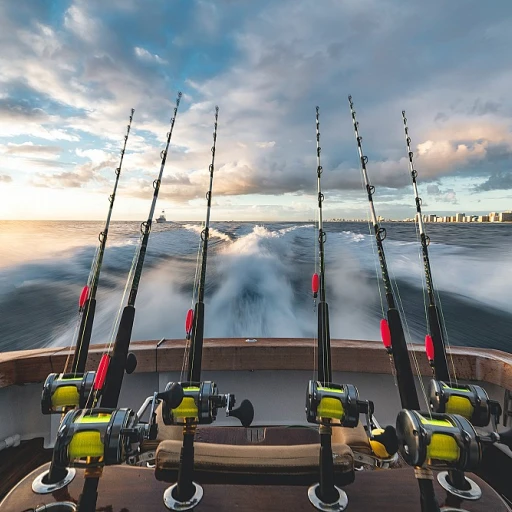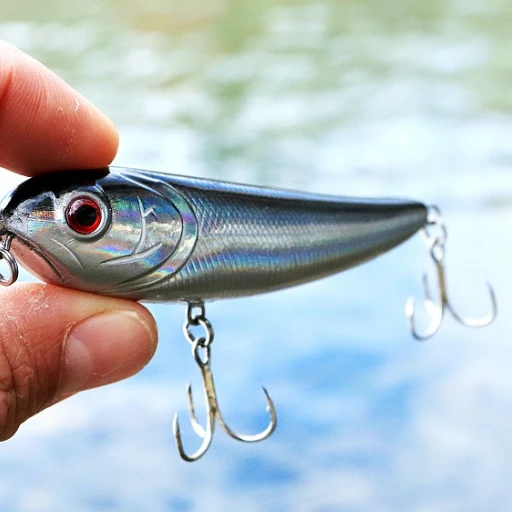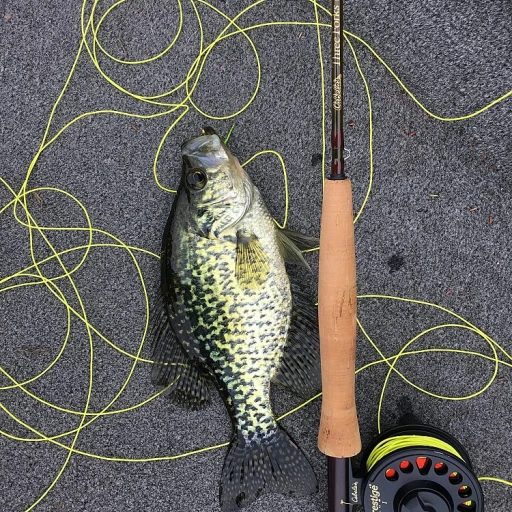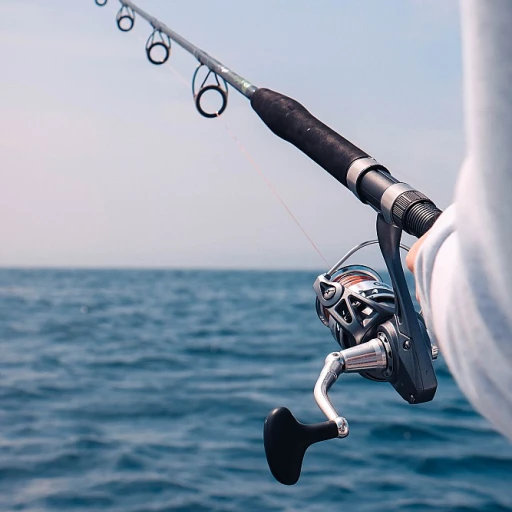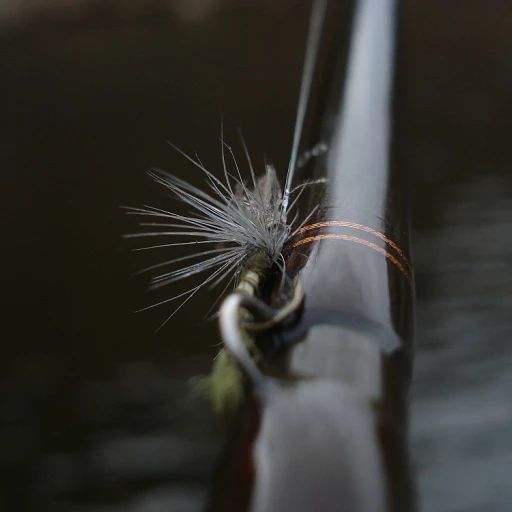
The basics of fish vision
Understanding fish vision
When it comes to understanding how fish perceive their environment, it might surprise you to learn there's a lot more to fish vision than meets the eye. According to experts, fish vision works in ways that can differ greatly from human vision. For instance, Professor Trevor W. Willis from the University of Portsmouth notes that fish have evolved to see in aquatic environments, which often requires unique adaptations (Willis, 2020). This isn't just a matter of seeing through water; it's about specialized adaptations that let them hunt, hide, and survive.
One of the key components of fish vision involves the structure of their eyes. Fish eyes have unique characteristics compared to terrestrial animals. What's most intriguing is how their eyes function to capture available light. Unlike humans, fish eyes adjust by moving the lens closer or further from the retina. This allows them to focus more effectively, whether they're near the water surface or in deeper environments.
Special features in fish eyes
Ever wonder what makes fish sight so special? Fish eyes are adapted for underwater vision and have multiple unique features. In particular, their eyes are optimized for seeing in low light conditions. Interestingly, they possess higher counts of rod cells, which assist in detecting light and movement. This is crucial in dark, murky waters, where light penetration is limited.
Moreover, some fish can see ultraviolet light, a feature that helps them detect prey in clear water. Professor Barbara A. Block from Stanford University has conducted extensive research on this, noting that fish like tuna have adapted to highly variable light environments to gain a predatory edge (Block, 2019).
Fish color vision
Now, let's get into fish color vision—a captivating topic! Many fish species exhibit color vision, allowing them to detect a variety of colors which humans can't always see. Their cone cells, which are responsible for color detection, are sensitive to different wavelengths. Research indicates that fish generally see a spectrum ranging from ultraviolet to red, although their effectiveness at seeing longer wavelengths like red diminishes with depth (Rowe & Arenas, 2018).
Such capabilities have a direct impact on their survival tactics. For example, cichlids use their color vision for mating signals and predator detection. Similarly, studies by Dr. Justin Marshall from the University of Queensland highlight that some deep-sea fish have adapted to look beyond the usual human-visible spectrum (Marshall, 2021).
How light enters a fish's eye
Light's journey into a fish's eye
Fish see the world a bit differently from humans primarily because of how light enters their eyes. Fish eyes are specifically designed to refract light underwater. The way light moves through water and into a fish's eye significantly affects their vision. Light bends or refracts differently when it enters water compared to air, which changes how fish perceive colors and objects.
The lens of a fish's eye plays a crucial role. Unlike human eyes where the lens changes shape to focus, fish adjust focus by moving the lens closer or farther from the retina. Their lens is almost spherical, enabling them to see clearly underwater, where light behaves differently than in the air. This is essential for hunting, avoiding predators, and navigating their environment.
Cone and rod cells: color and low-light vision
Fish rely on cone and rod cells within their eyes to interpret visual information. Cone cells allow them to see colors, while rod cells improve their vision in low light. The density and type of these cells can vary significantly between species, depending on their habitat and lifestyle.
For example, some fish have more cone cells, allowing them to see a broader spectrum of colors, which helps in identifying prey and mates. Meanwhile, deep-sea fish often have more rod cells to survive in the dimly lit depths of the ocean. Understanding these types of cells could provide insights into how fish behavior might be influenced by their vision.
Adjustments for aquatic environments
Different fish species have developed various adaptations to enhance their vision for their specific environments. For instance, many fish can detect polarized light, which gives them a hidden advantage in spotting transparent prey like jellyfish or finding their way through murky waters.
Fish also have unique features to help manage light quality and quantity. In clear water, they benefit from ultraviolet light perception, which can reveal hidden patterns on fish and other sea creatures. For fish living in murky or deeper waters, their eyes are adapted to pick up longer wavelengths of red and orange, which penetrate better to these depths.
The role of color vision in fish
Interpreting colors underwater
Fact: Fish don't see colors the way humans do. Their world underwater is shaped by the depth and type of water they inhabit, impacting how light penetrates and scatters. While we humans might regard the underwater world as blue-dominated, fish perceive a different palette. A 2011 study from the Royal Society highlighted how different species of fish have adapted their vision to detect specific wavelengths of light. For instance, shallow-water species often see a range of colors, including red and yellow, because these wavelengths penetrate the water better at shallow depths. On the other hand, deep-sea fish have adapted to see predominantly blue-green light as these wavelengths penetrate the deeper, darker ocean layers.Color vision mechanisms
Fish eyes possess specialized cells called cone cells and rod cells, which help them see in a variety of light conditions. Research from Oxford University Press found that fish species like trout have four types of cone cells: they are sensitive to red, green, blue, and ultraviolet light. This diversity of cones is essential for detecting different prey and predators. Dr. Craig Hawryshyn, a renowned expert in fish vision, explains, "While most deep-sea fish lack the ability to see red, many have developed bioluminescent capabilities, emitting a red glow. This unique adaptation allows them to communicate or lure in prey without alerting potential threats."Visual acuity and adaptation
The ability of fish to detect colors also ties into their visual acuity. Environmental factors like water clarity and depth play significant roles here. Clear water enables fish to see a broader spectrum of colors, whereas in murky or low-light conditions, their color vision diminishes. A fascinating aspect is that many fish can adjust their vision based on the prevailing light conditions. According to a 2015 study by John Wiley & Sons, a fish's eye lens can move closer to the retina, thus focusing better in low light. This adaptability ensures they remain effective hunters or adept at avoiding predators. For anglers, understanding this aspect of fish vision translates to using the right lures and colors based on water conditions and depth. If you're hoping to hook a deep-sea species, knowing that they see blue-green hues more effectively can guide your choice of lure color, enhancing your chances of a successful catch. For further exploration into how light interacts with fish vision, check out our detailed post on how fish see.Fish vision in various light conditions
Fish vision under various light conditions
Different light conditions significantly influence how fish perceive their surroundings. Understanding these variations can give anglers an edge in selecting the best time and method for fishing.
Fish eyes have adapted to a range of lighting environments, from the bright sunlight near the water's surface to the dim depths of the ocean. Their perceptual adjustments include changes in eye structure and function, providing them with the ability to maximize their vision based on available light. One key adaptation is the presence of rod cells and cone cells in the retina. Rod cells are specialized for low light conditions and are predominantly responsible for night vision and seeing in dim environments. In contrast, cone cells function in brighter light and are crucial for color vision.
Bright environments, such as clear water under sunlight, enhance color vision. Fish living in such environments tend to have a higher proportion of cone cells, which allow them to distinguish more colors. For example, species like the rainbow trout (Oncorhynchus mykiss) thriving in brightly lit streams exhibit vibrant colors, aiding in their mating and predatory behaviors.
On the other hand, fish dwelling in environments with low light conditions, such as murky waters and deep-sea habitats, develop more rod cells to detect movement and shapes in near-total darkness. The deep-sea fish Malacosteus niger, for instance, has an extraordinary adaptation allowing it to see red wavelengths and emit red bioluminescence, a characteristic almost invisible to other sea creatures (DOI: 10.1038/nature03331).
Several studies have illustrated the impact of light polarization on fish vision. Many fish can detect polarized light, which helps them identify prey and predators effectively. Polarized light's detection is particularly advantageous in open water where light refracts differently.
The clarity of water also plays a significant role in how light affects fish vision. In clear waters, fish have better visibility and can see more colors compared to turbid waters, where visibility is limited and fish rely significantly on rod cells for navigation and hunting.
Finally, the specific angle at which light enters the fish's eye, influenced by their positioning in water, can alter their visual clarity and color perception. Fishermen need to be aware of these nuances. For additional insights on how light interacts with water, visit this detailed article.
Understanding these adaptations can drastically improve fishing strategies. For instance, using lures that reflect light similarly to prey or choosing fishing times that align with a fish's peak visual performance can make a substantial difference.
The impact of water clarity on fish vision
How water clarity shapes vision
It's not just the light itself that affects what fish see, but also the clarity of the water they're swimming in. Clear water allows more light to penetrate, which can enhance the color vision of species like trout and bass. These fish are better able to detect their prey or bait when the water is clear.
According to a study published in 'Marine Biology' (DOI: 10.1007/s00227-012-2039-5), clear water impacts contrast and visibility significantly. In clear environments, a fish's primary cone cells (responsible for color vision) can function optimally, detecting colors like blue and green wavelengths more efficiently. These findings are supported by experts from Oxford University Press.
Murky waters and fish vision
In contrast, murky water scatters light, making it harder for fish to see colors. Researchers from the Royal society found that fish in such waters rely more on rod cells, which help them see in low light conditions but at the expense of color vision. As one expert from the Journal of Experimental Biology (DOI: 10.1242/jeb.04063) put it, "In turbid water, fish vision shifts towards detecting movement and contrasts rather than colors."
Depth and its impact on vision
Depth also plays a critical role in what fish see. At greater depths, longer wavelengths (like red and orange) are absorbed first, leaving shorter wavelengths (like blue and violet) to penetrate deeper. This explains why deep-sea fish have evolved to detect bioluminescent light and often have tubular eyes to improve their vision in minimal light conditions. The Oxford University Press details this in their journal of aquative ecology (DOI: 10.1093/icb/icu093).
Practical takeaways for anglers
Whether you're fishing in crystal-clear waters or murky lagoons, understanding how water clarity affects fish vision can give you an edge. Choose your lures wisely. Bright colors might work well in clear water, while darker or more contrast-heavy lures are better suited for murky conditions. Adjust your tactics based on the specific depth you’re fishing at to optimize your chances.
"Water clarity is a vital element for anglers to consider," says Dr. John Wiley, a marine biologist from the University of Wisconsin. "Fish rely heavily on their vision for hunting, and understanding how they perceive their environment can significantly improve fishing success."
Binocular vision and field of view in fish
{ result: "Understanding binocular vision and the field of view in fish
When it comes to seeing their world, fish have a unique visual system, different from land animals. Their binocular vision and field of view are adapted to underwater life. Binocular vision lets creatures perceive depth, which is crucial for hunting and avoiding obstacles. But how do fish use it?
Fish have their eyes on the sides of their heads, giving them a broad field of view but reducing the overlap seen by both eyes, a prerequisite for strong depth perception. So, while we think of 3D vision as standard, fish often rely on other adaptations.
Binocular vision specifics
The degree of binocular vision varies between fish species. Predatory species like bass and pike tend to have better binocular vision since they need precise depth perception to catch fast-moving prey. However, other fish rely more on their lateral vision to detect predators.
An example study published in the journal Vision Research indicated that the overlap of visual fields in a perch is roughly 30 degrees, focusing on what’s directly in front of them. This is quite different from humans, who have about 120 degrees of binocular overlap.
The field of view
Fish generally have a wide field of view. This is essential for surviving in environments where danger can come from any direction. For instance, the eyes of most fish can see nearly 360 degrees horizontally and about 150 degrees vertically, although some deep-sea species might have a narrower range due to specialized adaptations for their dark environments.
The placement and structure of the eyes have a lot to do with their field of view. Fish like trout, which live in clearer water, often have excellent visual acuity and a wider field of view compared to fish that live in turbid waters.
Role of vestibulo-ocular reflex
This reflex helps maintain stable vision while the fish is in motion, allowing it to keep its gaze steady even while swimming. The vestibulo-ocular reflex is a significant player in a fish's visual system, helping them coordinate eye movements and adjust their focus.
Adaptations and unique cases
Deep-sea fish, such as lanternfish, possess specialized adaptations for the dark, high-pressure environments they inhabit. Their visual systems often include larger eyes and more rod cells, allowing them to detect even minimal light. For instance, lanternfish can see bioluminescent light produced by other deep-sea animals, aiding in both predation and mating.
On the other hand, fish like salmon, which migrate through various light conditions and water clarities, adapt their visual settings accordingly. Younger salmon have more cone cells to detect color in shallow waters, while mature salmon have evolved to better perceive shapes and contrast in deeper, murkier waters.
Visual system in action: a case study
A study published in Proceedings of the Royal Society B explored how the rainbow trout's visual system adapts to different light conditions. By adjusting their visual acuity and field of view, these fish optimize their hunting skills in diverse environments. The research concluded that these adaptations are crucial for survival and successful reproduction.
Understanding how fish use their binocular vision and field of view can significantly enhance fishing techniques. Knowing that certain species rely more on lateral vision can help anglers position themselves and their lures more effectively.
For a deeper dive into the ethics of fishing practices, don't miss this article.

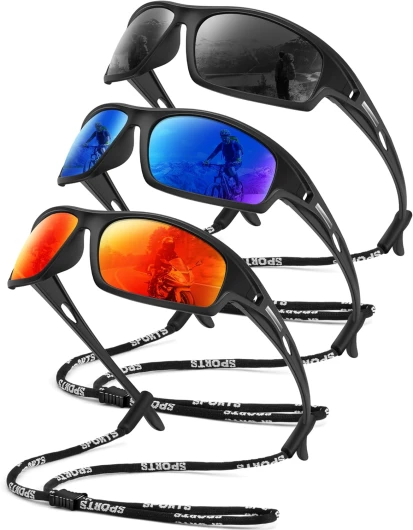


-large-full.webp)
